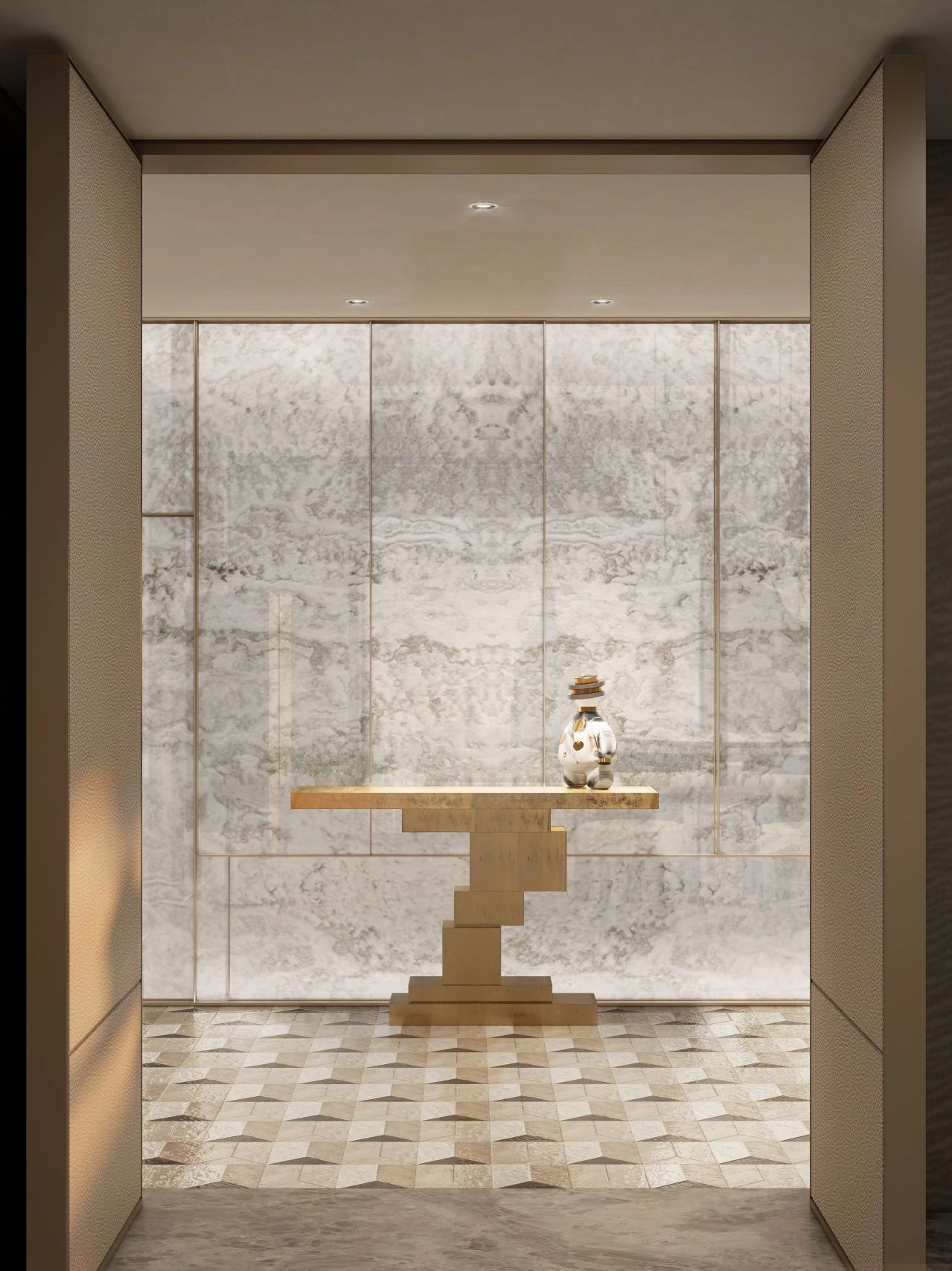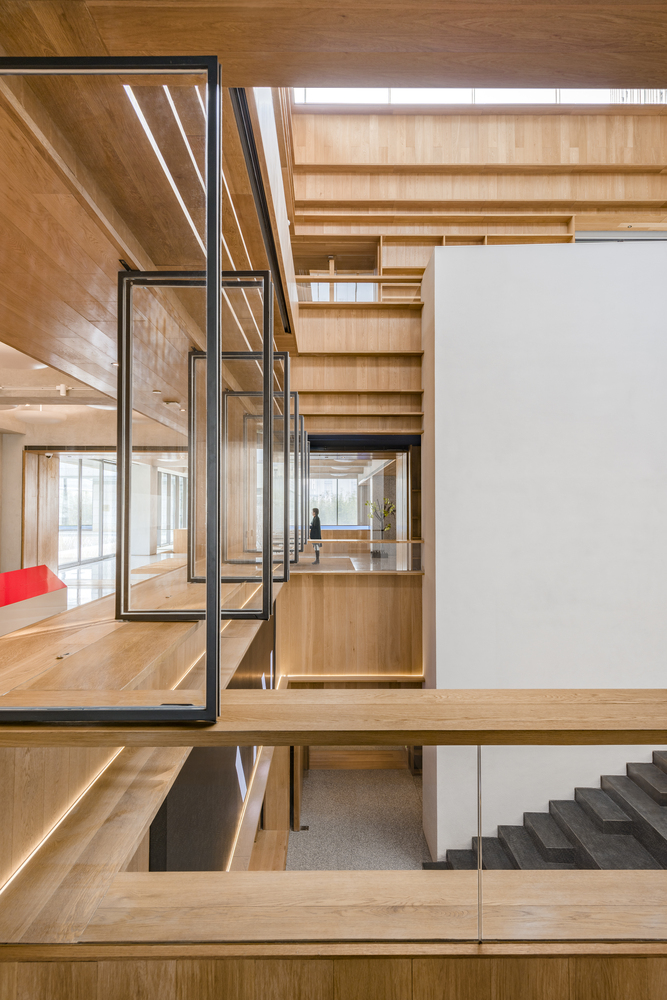House 6 Welsh+Major
2012-05-23 00:00
架构师提供的文本描述。新展馆为人们如何继续生活在这个地方的不断演变的故事开辟了一章。我们第一次受命时发现的房子是一种熟悉的类型:一个2层楼高的露台,在前面相对完整,在侧面和后面都增加了部分。后面的财产呈现为一系列元素积累了时间-厨房,洗衣房,露台和楼梯。我们的方法是有选择地删除一些元素,并在此过程中添加一些新元素。
Text description provided by the architects. The new pavilion presents a chapter in the evolving story of how people continue to live in this place. The house we found when we were first commissioned was a familiar type: a 2-storey terrace, relatively intact at the front, with additions to the side and the rear. The rear of the property presented as a series of elements accumulated over time- kitchens, laundries terraces and stairs. Our approach was to selectively remove some of the elements, and add a few new ones along the way.
房子的聚集被看作是一种超大型的静物:元素的组成为我们发现的房子创造了额外的6平方米。澳大利亚的平均房屋面积现在已经超过300平方米,而且还在上升-这种资源压力的增加不能无限期地持续下去。因此,我们认为,必须提供灵活的空间,而不是提供过多的额外空间,以满足我们住房居民的需要。幸运的是,我们的客户同意我们的意见。
The massing of the house was treated as an oversized still life: the composition of the elements creating an additional 6 square metres to the house we found. The average size house in Australia is now beyond 300 square metres and is still rising- this increase in pressure on our resources can’t be sustained indefinitely. Consequently, we feel it is important to offer flexible spaces rather than excessive additional space in responding to the needs of the inhabitants of our houses. Fortunately, our Clients agreed with us.
我们在项目中不做的事情往往和我们所做的工作一样重要。在可能的情况下,我们尽量避免拆除现有的建筑,以减少物流和工程成本。在内部,上层的布置没有改变,而楼下的房子的前部也没有被改变-尾翼是我们集中精力的主要区域。该项目的主要目的之一是将后草坪与住宅的居住空间连接起来。在相对温和的悉尼气候下,简报的一个关键部分是能够向外界敞开大门。
What we don’t do in our projects is often just as important as the work we do. Wherever possible we try to avoid demolition of existing structures in order to reduce material flows as well as project cost. Internally the upper floor arrangement was left unaltered, whilst downstairs the front of the house was also left unaltered- the rear wing was the main area we concentrated upon. One of the main aims of the project was to connect the rear lawn with the living spaces of the house. In a relatively benign Sydney climate, a key part of the brief was to be able to open the house up to the outside.
重新设置厨房和相关的生活空间在年级与后方草坪扩大了有效的居住空间的房子,包括室外空间。增加了一个新的内部浴室,一个现有的后起居室被改造成一个书房。最后,将正式餐厅与后院连接起来的前厅区域被重新配置成一张日间床,如果需要的话,可以关闭它作为短期客人住宿。
Re- setting the kitchen and associated living space on grade with the rear lawn expanded the effective living space of the house to include the outdoor spaces. A new internal bathroom was added, and an existing rear sitting room was altered to become a study. Finally, a vestibule area that linked the formal Dining room to the rear yard was re-configured to hold a daybed, which could be closed off to serve as short-term guest accommodation when required.
房子的后部朝南。新的屋顶形式创造了一种灯笼形式,允许北部和东部的阳光穿透房子在三月和十月之间。新楼板采用电子加热系统,以减少加热时间,从而保持低运行成本。
The rear of the house faces predominantly south. The new roof forms create a lantern form that allow northern and eastern sunlight to penetrate the house between March and October. The new floor slab is electronically heated using a system that reduces the time it takes to heat the slab, and consequently keep running costs low.
这座房子是一种小规模的、经过深思熟虑的干预措施,以对环境负责的方式促进建造的景观。同样重要的是,这是一个灵活,舒适的家庭住宅,适合我们的客户的需要。
The house is an exercise in small, considered interventions that contribute to the built landscape in an environmentally responsible manner. Just as importantly, it is a flexible, comfortable family home that suits the needs of our Clients.
 举报
举报
别默默的看了,快登录帮我评论一下吧!:)
注册
登录
更多评论
相关文章
-

描边风设计中,最容易犯的8种问题分析
2018年走过了四分之一,LOGO设计趋势也清晰了LOGO设计
-

描边风设计中,最容易犯的8种问题分析
2018年走过了四分之一,LOGO设计趋势也清晰了LOGO设计
-

描边风设计中,最容易犯的8种问题分析
2018年走过了四分之一,LOGO设计趋势也清晰了LOGO设计






































































